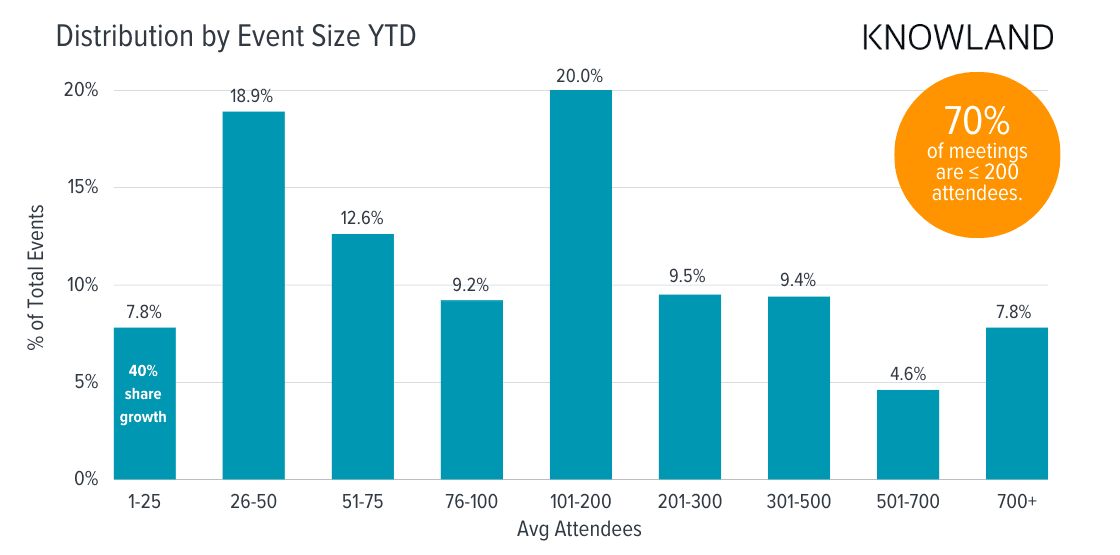Planning the budget for your hotel is crucial for financial success. But are you sure that your commercial team is following the latest hotel revenue management trends, like total revenue management and dynamic pricing, to optimize profits?
Don’t worry, we’ve got you covered! In this guide, we’ll break down everything you need to know about budgeting with revenue best practices in mind. Let’s dive in!
Understanding Your Hotel’s Performance
As you set the budget for your hotel, take steps to understand your year-to-date performance. These steps can help anticipate factors like supply and demand, hotel room revenue, optimal distribution channels, and more. Reference the following financial statements and key performance indicators to get a head start.
1. Embracing Total Revenue Management
Total revenue management is a pivotal aspect of budgeting, where meticulous planning and strategizing can substantially impact your property’s financial outlook. This approach shifts the focus from mere room revenue to a holistic view, encompassing meetings, events, F&B, and other revenue streams.
Analyze historical data, market trends, and the performance of various revenue streams to make informed decisions on allocating resources effectively. Leverage the metrics to optimize room rates, manage distribution channels, and enhance ancillary revenue sources accordingly.
Total revenue management ensures a more accurate representation of potential earnings and identifies opportunities to increase revenue and profitability across your entire hotel operation.
2. Evaluating Key Performance Indicators
During the annual budgeting season, occupancy rates, average daily rates, and revenue per available room play a key role. Monitor these KPIs in real time and compare them to previous years.
- Monitoring occupancy rates can show you how much demand there is for your rooms at any given time.
- Tracking daily rates can inform on peak revenue periods, the impact of events on revenue, and the impact of pricing strategies.
- Calculating RevPAR demonstrates how well you’re filling your available rooms and at what rate.
However, there may be gaps in this data that you’ll need to address.
Occupancy Rate
If your occupancy rates are low, identify the reason. Create a flexible budget that allows you to increase revenue through alternative means, like selling conference space or raising your ADR.
Average Daily Rate
If your average daily rate is low, but you’re seeing high demand, you may be charging too little. On the other hand, it could be a sign that you need to improve the quality of your rooms or amenities. Look to your comp set to compare, then address inconsistencies in your business processes. You may need to pivot your rate strategy to encourage demand and prevent revenue loss.
Revenue per Available Room
If your revenue per available room is low, dig into your pricing strategy and inventory management. You’ll need to address problem areas in your 2024 hotel budget.
Still, you may be making up for RevPAR losses with ancillary revenue. Before you alert revenue management teams, calculate your TRevPAR. TRevPar accounts for the total income generated by an account, including meeting space, F&B services, and amenities. You’ll get a clearer picture of the average revenue made per customer.
Setting Commercial Goals
To ensure the success of your hotel, it’s important to set clear goals and targets for the upcoming year. One of the key objectives is to determine your revenue target based on the hotel’s current performance and market trends. This will enable the hotel to plan and allocate resources effectively to achieve the desired financial outcomes.
Next, identify areas where you can minimize expenses without compromising the quality of services. By setting cost reduction goals, your hotel can optimize its operations and maximize profits.
Another crucial aspect of financial planning is establishing cash flow targets. These targets reserve funds for operational needs like salaries, investing in upgrades, and maintaining inventory levels.
With these goals in place, you can create a roadmap for success and stay on track toward achieving financial objectives.
Developing New Hotel Revenue Optimization Strategies
Boost your hotel or resort’s earnings with these powerful revenue optimization methods.
1. Implementing a Dynamic Pricing Strategy
It’s no secret that occupancy is lagging in terms of growth. To maximize revenue during peak seasons, it’s important to optimize prices with yield management strategies. Hotels can use dynamic pricing to set different room rates based on demand and availability. During peak seasons, your property can charge higher rates to ensure you’re able to meet demand. Track historical occupancy data, competitive pricing, seasonal trends, and special events to determine the optimal room rates for high-demand periods. This hotel pricing strategy may help boost your occupancy rates.
2. Increasing Meetings and Events Revenue
Budget for tools that help increase total account revenue and win rates. Reference data like booking behavior and account preferences to upsell your amenities and build stronger rapport with group leads.
Get more revenue-boosting tips for selling meeting space.

3. Enhancing Direct Bookings
According to Knowland data, small groups of 200 or fewer attendees make up 70% of meeting volume year-to-date. Knowland’s data also revealed that one-day events lead in volume YTD, though longer meetings are seeing more growth.
This is a strong opportunity to dominate the one-day events in your market for space and catering revenue.
Upgrade your hotel’s website to provide easy and convenient booking options for these smaller groups and events. Leveraging instant booking for smaller groups will allow sellers to focus on priority accounts. On the other hand, streamlining bookings for one-day events can help fill day-of-the-week gaps and need dates.
Implementing Cost Control Measures
To maintain a healthy bottom line, spend time reviewing procurement processes and identifying opportunities for cost savings. By negotiating better deals with suppliers and optimizing inventory management, hotels can significantly reduce expenses without compromising on quality.
Another area you can implement cost control measures is energy consumption. Hotels can reduce utility costs and help the environment by using LED lighting and smart thermostats.
Furthermore, optimizing staff scheduling is crucial for maximizing return rates. Analyze historical data and forecast demand to ensure you have the right number of staff members at the right time.
As you consider staff schedules, using tools like our hotel sales calculator can help define selling-time expectations. By understanding how much time it takes each sales manager to reach a goal during hotel budgeting and forecasting, you can:
- Guide sellers by setting achievable goals and time commitments for success.
- Empower sales leaders to identify and support individual strengths, improving close rates.
- Help operations understand the cost of non-selling activities, optimizing revenue and scheduling.
Beat Your 2024 Revenue Goals with Knowland
Navigating the budget for your hotel requires a strategic approach that combines a thorough understanding of your current performance, clear financial goals, effective revenue optimization strategies, and stringent cost control measures. By implementing these strategies and best practices, hoteliers can set realistic budgets that will drive growth in the upcoming year.
Request a demo to learn how Knowland helps revenue leaders in the hospitality industry achieve their goals.



